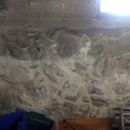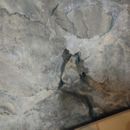Repointing a field stone basement
This morning I went to look at what could potentially be my first big job as an independent contractor. I spent a year working for a mason, and two years with a green home builder, but since going out on my own, it’s mostly been small handyman jobs.
The client’s home was built in 1880 and the foundation is made of field stones. The mortar between the stones is crumbling. You can make a mess of it by just brushing it with your hand. He wants it repointed so he can paint over it. He’s not looking to make the space look finished. He wants to turn it into a shop space.
So it seems like a pretty straightforward job of chiseling out the bad mortar and slapping in new stuff. There is about 450 sqft of wall that needs work.
This isn’t a green building question so much as a due diligence and cover my ass question.
The client isn’t complaining about the basement being wet or drafty. He just doesn’t want any maintenance problems again. But if I’m doing this work anyway, should I be recommending something more? I saw one youtube video that recommended against painting. Should I advise a cement based waterproof coating instead?
I’d appreciate any advice from an experienced mason. What should I look out for?
Thanks!
GBA Detail Library
A collection of one thousand construction details organized by climate and house part











Replies
Matthew,
This job is relatively easy, but it is important that you do it right. If you do it wrong, you can cause significant long-term damage to the wall. The Department of the Interior publishes standards for treatment of historic buildings, and while this one may not be historic, it is old. Their preservation brief #2 gives an excellent primer on repointing old masonry. You can find it online here: https://www.nps.gov/tps/how-to-preserve/briefs/2-repoint-mortar-joints.htm
Briefly, you don't chisel out the soft old mortar, because it is all soft. You gently brush away the really soft stuff so you can see when the mortar that's left is not nearly as soft. The mortar you use for the replacement is also important. It must match the mechanical properties of the old mortar. For an 1880's house, mortar mixed to the specs for Type "N" or "O" is probably about right. You generally can't buy this in a bag mix. You buy sand, cement, and lime and mix your own.
Once you get started, the work is actually pretty easy and you learn to make it neat pretty fast. You will need a couple of sizes of trowels, both pointed and square. If you read up on the process and you're willing to take the time to learn as you do it, you should be able to do a passable job.
Thanks Peter! I will print the NPS guidelines you link to and take a closer look. I've watched several youtube videos. One guy mixes Type N with Type S. Another uses Type S with an admix. I think I've only ever used Type S and never really thought about it. Making my own mix sounds like a bit of extra labor and I'm not sure where I would buy it. I already own a few trowels, but I saw one video of a guy using a grout funnel. It looks like he's putting icing on a cake! I'm not convinced it's easier or faster, but I may try it.
I'm also thinking I should take a closer look at the wall to see how much is really soft. If large parts of the wall still have solid joints and I leave them alone, it could be a much smaller job that I'm currently estimating.